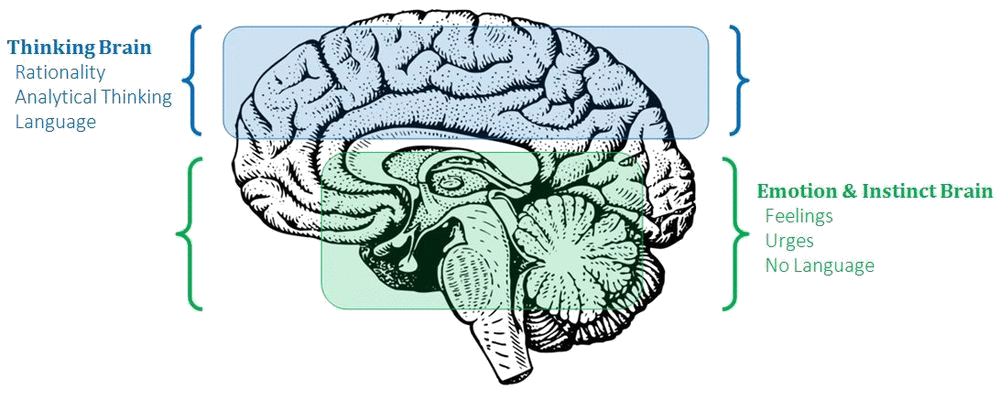Therapy for Trauma
Note: this page is in the process of being updated, pls see the other specialty pages & the therapy process page to have a better sense of what therapy entails.
Trauma is incredibly more common than most people realize & it comes in many forms. PTSD and other trauma responses aren't exclusive to the military.
Any time a person encounters an event (or series of events) that is too much or too fast for their coping at that moment to handle, it can overwhelm their nervous system and potentially cause an emotional scar we call trauma.
A traumatic event may have happened in the past but trauma is the stress that lives on in the nervous systems of the people who were affected.
Being caught up in our minds, emotionally dysregulated (either numb and shut down or easy to overwhelm) and being disengaged with what is truly important are all signs of a nervous system in need of some help in processing through something.
The good news is that healing is possible. Through proven techniques, it’s possible to unlock stuck parts of the mind to let it know that "That was then, this is now; it’s okay to let go now."

Three Common Types of Trauma
The three main types of events & situations that are associated with producing these effects are:
1) a severe event (such as physical abuse, rape, near fatal accident or witnessing these events)
2) chronic & accumulated stress
3) developmental trauma (verbal or emotional abuse, neglect, dysfunctional environment)
The effects of trauma can happen outside of an isolated, severe event. For example, the effects of chronic and unrelenting stress can wear someone down (psychologically and physiologically) and cause traumatic symptoms. The effects of childhood neglect, emotional abuse or bullying from other children often persist into adulthood.
Patterns Following Trauma
Your nervous system is made of two basic parts - the gas pedal (sympathetic) and the brake pedal (parasympathetic). The effects of traumatic stress can be seen both in the body and the mind creating a hard time balancing between the gas and the brake evenly.
Here are the two basic patterns seen in those that have a nervous system with unresolved trauma:
1) Too Much Gas Pedal - Recurrent Over-Activation of the Nervous System
Anxiety, panic attacks, anger and rage outbursts, racing thoughts, chronically tight muscles
2) Too Much Brake Pedal - Recurrent Under-Activation of the Nervous System
Depression, apathy, exhaustion, numbness, dissociation, disconnection in relationships
Our natural reaction to stressful situations is to resist/fight, run away or freeze. When some overwhelming event happens (or long series of events, such as being neglected as a child), our nervous systems can lose the ability to resolve the stress and move forward. We get stuck in the fight, flight or freeze responses and we become emotionally and physically unbalanced.
Trauma and the Brain
The science of treating trauma has come a long way in the last 20 years alone. What many of the pioneering researchers of trauma work all seem to agree on is that effective treatment of trauma must include two aspects to make it complete and as effective as possible.
A Simple View of the Brain
To make things easy to understand, let’s say the brain is made of two main systems. There is the more recently evolved thinking brain on the top called the neocortex. Then the more ancient sensing and body-focused brain that we share with reptiles on the bottom is called the brain stem.

Top Down Processing
See if you can read this….
I cnduo't bvleiee taht I culod aulaclty uesdtannrd waht I was rdnaieg. It dseno't mttaer in waht oderr the lterets in a wrod are, the olny irpoamtnt tihng is taht the frsit and lsat ltteer be in the rhgit pclae. Tihs is bucseae the huamn mnid deos not raed ervey ltteer by istlef, but the wrod as a wlohe.
It is amazing that you can read this garble of letters above. The reason is that your brain has the ability to use what neuroscientists call top-down processing. By using this system your brain doesn’t need to read each letter. It moves more quickly by using mental shortcuts to find a match of a word you already know. This is the thinking brain in action.
This is important to trauma because when something overwhelming occurs, our perception of what is safe and what is dangerous becomes unbalanced. Our minds can easily start to use mental shortcuts to try to keep us safe and avoid having an experience like that again. When we experience something that is somehow related to a trauma, the mind applies a shortcut and labels it as dangerous.
- An adult who grew up with an abusive father might become tense and irritable around men who resemble their father.
- Someone who was raped might experience fear at the thought of being in a bar by him or herself.
- A person that was bullied about their looks might experience fear and shame about others seeing their body and might over-control what is shown by always wearing baggy clothes.
Talk therapy can help you to slow down and notice when the thinking mind is making an interpretation about a scenario that is the same old, familiar story. There is then the opportunity to create new ways of looking at things and make sense of the experience in a way that empowers one to move forward.
You can have a whole new perspective on the past and the future. This change can then help move ‘downward’ into the brain and affect emotions (less anxiety, dread, anger) and the body as well (fewer problems sleeping, headaches or digestive issues). There is then the opportunity to create new ways of looking at things and make sense of the experience in a way that empowers one to move forward.
Bottom Up Processing
This type of processing in the brain starts with the body. The older, ‘reptile brain’ is always online and has a lot of control over how we process the world, even if we are completely oblivious to it. It’s relatively common for people who’ve experienced trauma to ‘live in their heads’ and have very little awareness of what their body is feeling. Yet if this is not addressed, no amount of thinking differently will help.
Renowned trauma expert Bessel Van Der Kolk summarizes his research and experience in the field in the title of his most popular book – The Body Keeps the Score. It appears that following a traumatic event (or traumatic period) in someone’s life, the body will brace with tension and it doesn’t tend to let go of this stress on its own. This part of the brain becomes stuck in the original fight, flight or freeze reaction.
Thankfully, there are ways to let the body know that "That was then and this is now"; that it is now safe to let go of fear, tension and stress. This is done through the process of bottom-up processing.
Addressing Shame
Finally, the glue that often binds trauma symptoms together is shame. Research indicates that the greater the trauma, the more likely the person will have the belief it was his or her own fault. Shame, like the rest of the symptoms mentioned above, can thankfully be unraveled and healed.
There is a lot of shame that surrounds trauma. It’s crucial to recognize and understand the impact of trauma because if we don’t, we will blame others or we blame ourselves. If we can understand the nature of trauma, we can begin to relate to it with compassion.
Effective Therapy for Trauma
To summarize, effective therapy for trauma must include these three core components:
- top-down processing (your thinking mind & the stories you tell yourself)
- bottom-up processing (how your body responds and what it is holding onto)
- addressing shame that trauma naturally creates
If you choose to do this work, you can expect to learn to:
- Regulate the gas & brake of your nervous system (without food or substances)
- Understand how past trauma may relate to your current struggles
- Loosen the bind of shame
- Build greater self-awareness
- Identify and prioritize your values
I don’t dedicate myself to this work to help people get rid of symptoms. I love to do this work with my clients because the aim is to help them live a vital, meaningful life, while effectively handling the pain that inevitably comes their way as a part of being human.
I also do this work because, having experienced significant medical trauma, I know firsthand the gift of being able to let go of trauma and find new ways of relating to the world that are less focused on safety and more focused on living fully.
If you decide to work with me our process will involve learning and practicing the skills of being more aware, more open and more engaged with what is most important to you. My style of working with people is an active, skills-focused approach rather than just talking about the problem.
